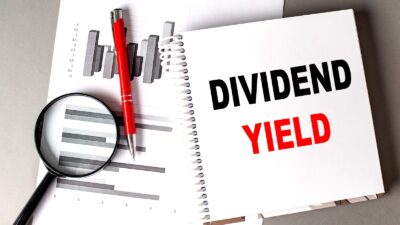Cheap dividend shares could offer a relatively high passive income over the next few years. In some cases, they’ve high yields versus their historic averages because they’ve yet to recover from the 2020 stock market crash. And, with other mainstream assets such as cash and bonds offering low returns due to low interest rates, dividend stocks may offer an attractive means of funding retirement.
Of course, they come with higher risks than other assets. As such, seeking to manage risks could be a prudent step in the long run.
High passive income returns from dividend shares
Dividend shares have been a popular means of obtaining a passive income in retirement for many years. They’ve generally offered a high return that’s grown at a brisk pace. At the present time, some dividend stocks offer higher returns than their long-term averages. They may face challenging operating conditions that have the potential to improve as an economic recovery takes hold. This may allow them to deliver rising profits and higher dividends.
Passive income stocks: our picks
Do you like the idea of dividend income?
The prospect of investing in a company just once, then sitting back and watching as it potentially pays a dividend out over and over?
If you’re excited by the thought of regular passive income payments, as well as the potential for significant growth on your initial investment…
Then we think you’ll want to see this report inside Motley Fool Share Advisor — ‘5 Essential Stocks For Passive Income Seekers’.
What’s more, today we’re giving away one of these stock picks, absolutely free!
Clearly, an improvement in their financial prospects isn’t guaranteed. Risks are high across the world economy at the present time and could even cause a fall in dividends for some companies and sectors.
However, the past performance of the world economy suggests that a return to growth, and stronger operating conditions for many industries, could be ahead in the coming years. This may lead to rising passive incomes across many sectors.
Relative income prospects
At the same time as dividend shares offer a relatively high passive income opportunity, other mainstream assets appear to have much more limited scope to provide an income in retirement. For example, low interest rates have caused bond prices to rise so that their yields are extremely low in many cases. Similarly, cash savings accounts now often offer returns that are below inflation.
As such, there may be fewer opportunities for investors to obtain a worthwhile income from their capital in retirement. This doesn’t mean dividend shares should be the sole means of obtaining an income, since diversification among asset classes could reduce risk. However, it could mean that the importance of dividend stocks has increased over recent years.
Managing risk
As well as diversifying among asset classes, holding a range of dividend shares can help to reduce risk. They may also provide a more resilient passive income in retirement. This task’s been made easier in recent years by lower sharedealing charges. That may make diversification more accessible to a wider range of investors.
Although diversifying won’t eliminate risk, it can reduce an investor’s reliance on a small number of businesses from which they obtain their income.
One or more of them may experience difficult operating conditions that cause their dividends to fall. But that may have a smaller impact on a diverse portfolio than on a concentrated set of holdings.







